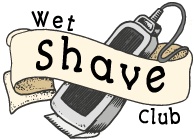Ever found yourself hesitating before your bathroom mirror, scissors or razor in hand, wondering if you should attempt trimming your hair or shaving at home? Yes, you can.
In fact, with the right techniques and tools, DIY hair trimming and shaving can be not only feasible but also rewarding.
Whether you’re aiming for a quick touch-up between salon visits or seeking to master a new grooming skill, embarking on the journey of home hair care offers a world of convenience and cost-effectiveness.
From saving time and money to having complete control over your style and length, the benefits are plentiful.
Here, we’ll explore 11 essential tips to help you navigate the world of DIY hair trimming and shaving, ensuring a successful and satisfying experience every time. Stay focused.
Is It Okay to Trim Your Hair at Home?
Yes, it’s perfectly okay to trim your hair at home, especially if you’re comfortable with basic hairstyling techniques and have the right tools.
Trimming your hair can help maintain its health and appearance between salon visits, saving you time and money. However, it’s essential to proceed with caution and follow some guidelines.
Start by investing in quality hair-cutting scissors or clippers designed for home use. Always trim your hair when it’s dry and detangled to ensure even results.
Use a comb to section off small portions of hair and trim gradually, focusing on removing split ends or achieving your desired length. Remember, it’s easier to take off more hair later than to fix a drastic mistake, so start conservatively.
If you’re uncertain or aiming for a complex style, it might be best to seek professional help. With patience and practice, home hair trimming can become a convenient and satisfying part of your grooming routine.
11 Tips for Trimming Your Hair or Shaving at Home
Trimming your hair or shaving at home can be a convenient and cost-effective way to maintain your appearance.
However, it requires careful attention to detail and the right techniques to achieve satisfactory results. Here are 11 tips to help you navigate the process effectively:
1. Start with Clean Hair

Initiating your hair trimming or shaving routine with clean hair is pivotal for optimal results. Washing your hair beforehand ensures the removal of dirt, oils, and product buildup that can impede the cutting process.
Clean hair sets the stage for a smoother and more precise trimming or shaving experience, enabling you to achieve your desired look with greater ease and accuracy.
2. Use Sharp Scissors or Razors
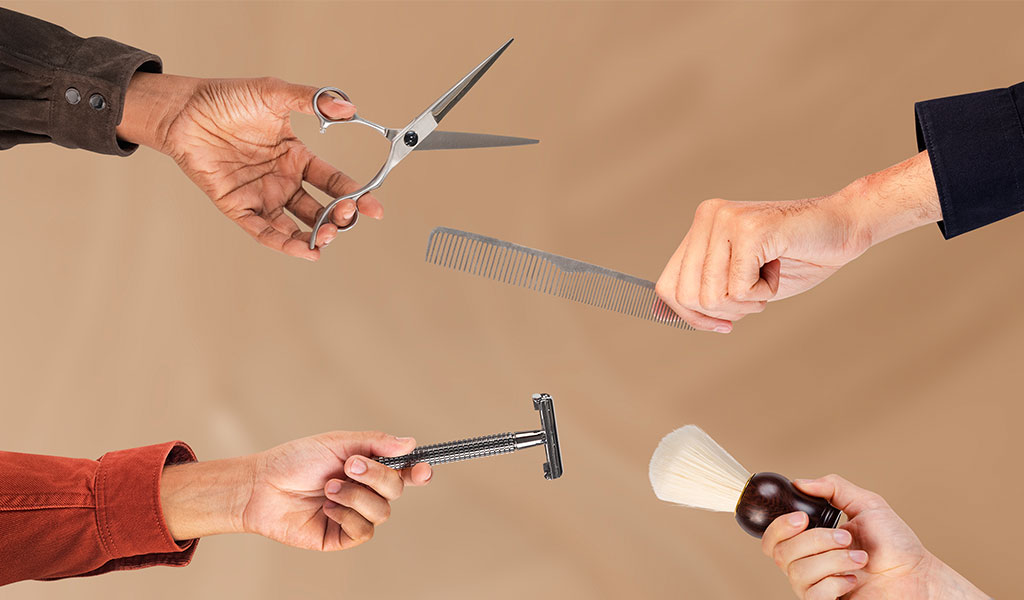
Investing in high-quality, sharp scissors or razors designed explicitly for hair cutting or shaving is essential. Dull tools can lead to uneven cuts, frayed ends, or skin irritation, compromising the overall outcome.
Maintaining sharpness and cleanliness in your scissors or razors is crucial for ensuring optimal performance and achieving professional-looking results.
3. Trim in Small Sections
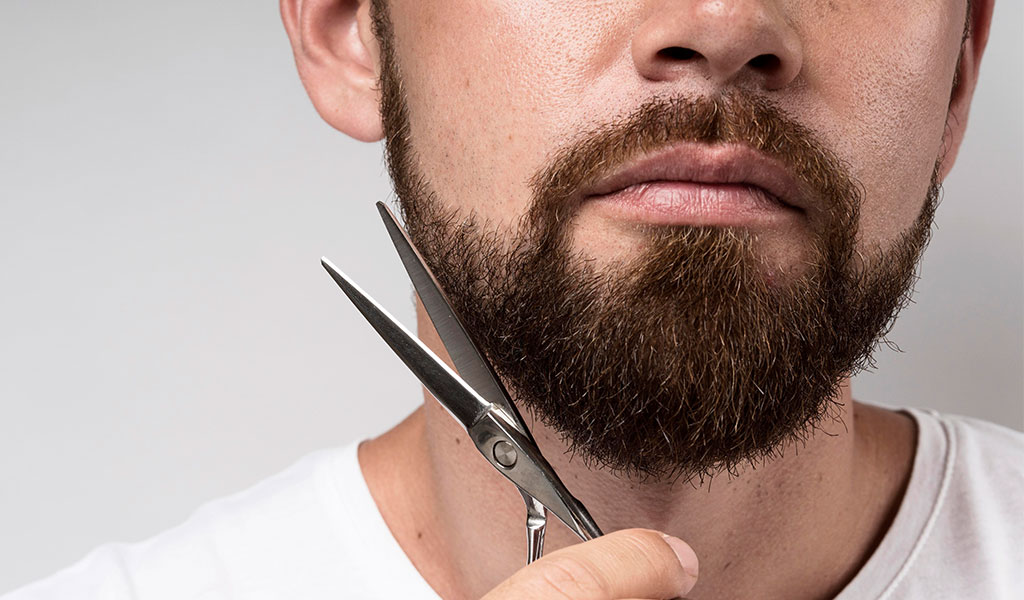
Opting to trim your hair in small sections enhances precision and control over the process. Working with smaller sections allows for better maneuverability and reduces the risk of accidentally removing more hair than intended.
By focusing on one section at a time, you can meticulously tailor your haircut or shave to your liking, resulting in a more polished and cohesive look overall.
4. Comb and Section Your Hair
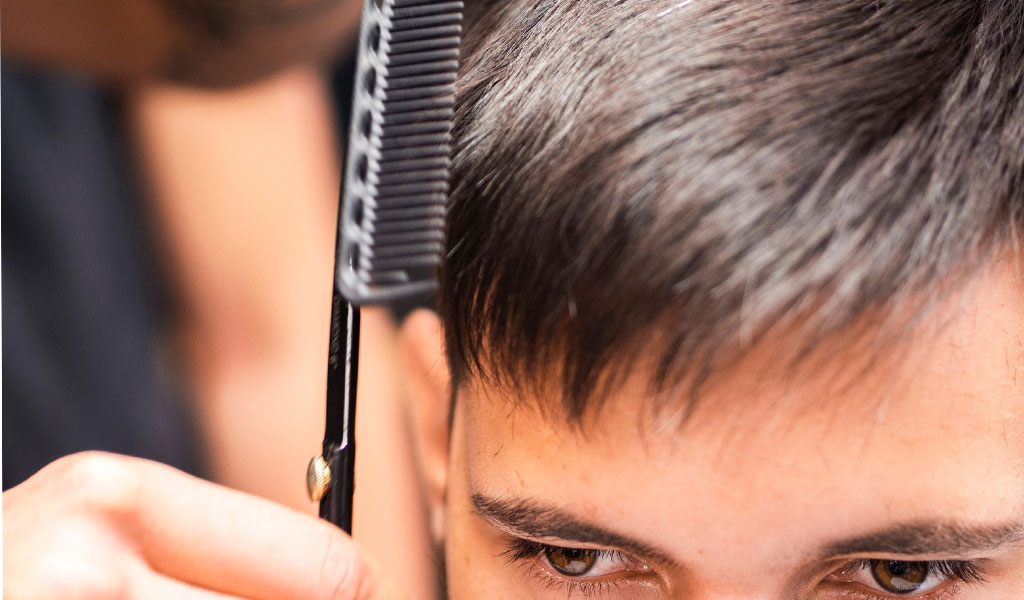
Prior to trimming or shaving, meticulously combing through your hair to remove tangles and ensure uniformity is key.
Dividing your hair into manageable sections with clips or ties, particularly for those with thick or long hair, aids in maintaining control and preventing inadvertent cutting of adjacent sections.
This methodical approach facilitates a smoother and more organized trimming or shaving process, yielding more consistent and professional results.
5. Cut or Shave in a Well-Lit Area

Operating in a well-lit environment with ample natural or artificial light is imperative for achieving accuracy and precision in your hair trimming or shaving endeavors.
Adequate lighting enables clear visibility of the hair, allowing you to assess progress accurately and make necessary adjustments as needed.
Avoiding dimly lit spaces minimizes the likelihood of errors and ensures a more successful outcome overall.
6. Follow Natural Hairlines

When trimming or shaving, follow the natural contours and hairlines of your scalp or body. This helps create a more natural-looking result and reduces the risk of creating harsh lines or uneven transitions.
Pay attention to the direction in which your hair naturally grows and adjust your cutting or shaving technique accordingly.
7. Trim or Shave in the Direction of Hair Growth
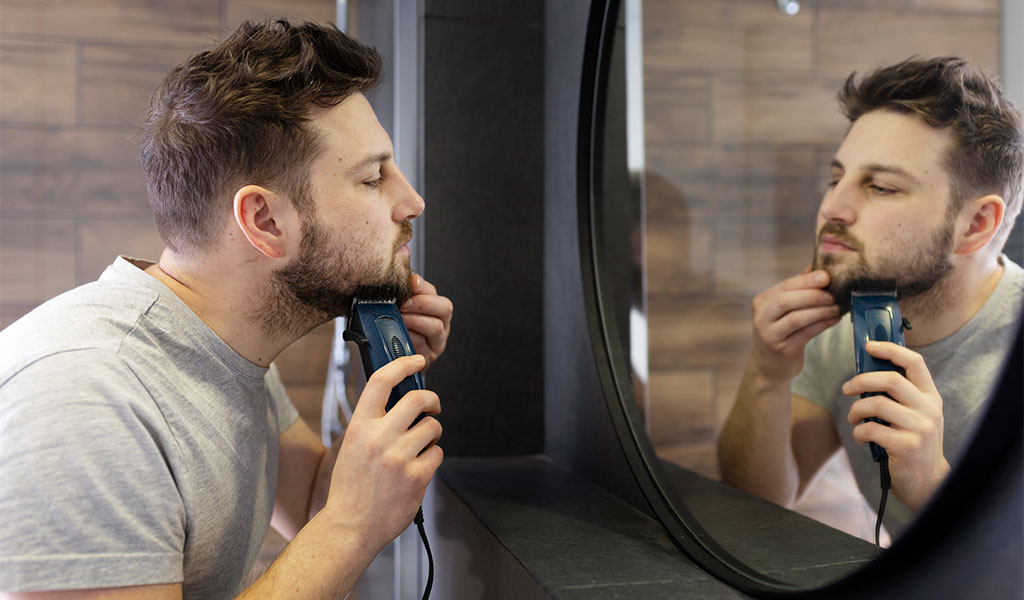
To minimize irritation and achieve a smoother finish, always trim or shave in the direction of hair growth.
This approach reduces the risk of ingrown hairs, razor burn, and skin irritation. Be gentle and avoid applying excessive pressure, especially when shaving sensitive areas.
8. Take Your Time

Rushing through the trimming or shaving process can lead to mistakes and uneven results. Take your time and proceed with patience and precision.
Carefully assess each section as you work and make adjustments as needed. Remember, it’s better to take your time and achieve a satisfactory outcome than to rush and regret it later.
9. Check and Recheck for Symmetry

Consistently check and recheck your progress to ensure symmetry and balance throughout your haircut or shave.
Use mirrors to view your hair from different angles and compare both sides for evenness. Make minor adjustments as needed to achieve a balanced and cohesive look.
10. Don’t Rush the Process

Resist the urge to rush through the trimming or shaving process, especially if you’re unfamiliar with the technique or working on a new style.
Take breaks as needed to rest your hands and eyes, and return to the task with a refreshed perspective. Rushing increases the likelihood of mistakes and can result in an unsatisfactory outcome.
11. Seek Help if Unsure
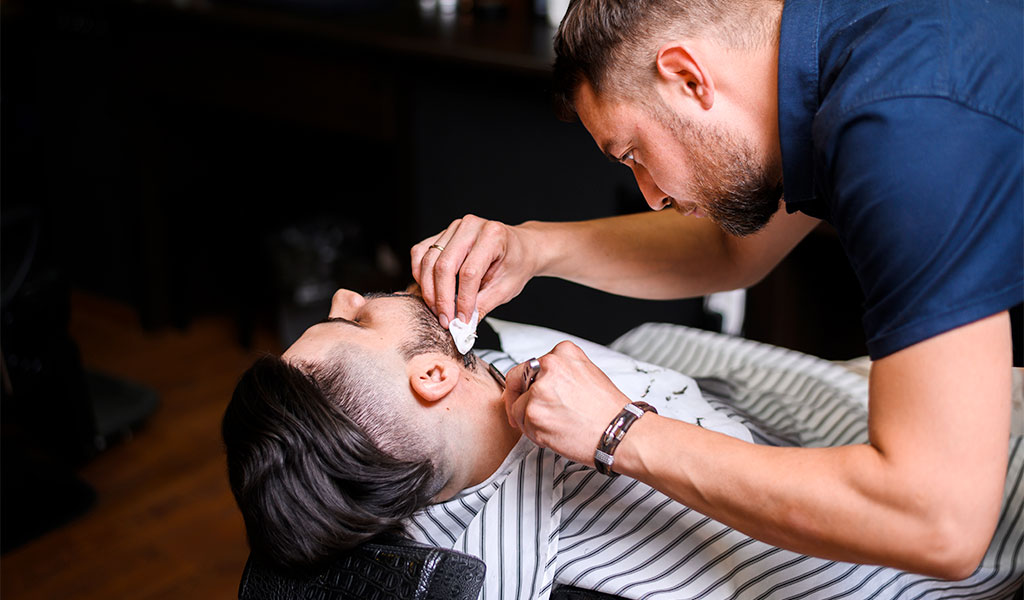
If you’re uncertain about your trimming or shaving skills, don’t hesitate to seek help from a friend, family member, or professional hairstylist. They can offer guidance, and advice, or even perform the haircut or shave for you.
It’s better to seek assistance than risk making irreversible mistakes or causing damage to your hair or skin.
Convenience and Cost-effectiveness of DIY Hair Trimming
DIY hair trimming offers several benefits in terms of convenience and cost-effectiveness, making it an attractive option for many people.
Saves Time
One of the primary advantages of trimming your hair at home is the time-saving aspect. Instead of scheduling and traveling to a salon appointment, you can perform a quick touch-up whenever it fits into your schedule.
This flexibility is especially beneficial for individuals with busy lifestyles or unpredictable schedules.
Saves Money
DIY hair trimming significantly reduces salon expenses over time. While initial investments may be required for quality scissors or clippers, these costs are minimal compared to regular salon visits.
By eliminating salon fees, you can save a significant amount of money in the long run.
Convenience of Home Setting
Trimming your hair at home provides a comfortable and familiar setting, allowing you to relax and focus on the task at hand.
You can customize your environment to suit your preferences, whether it’s playing your favorite music or enjoying a cup of coffee while you trim.
Control Over Style and Length
With DIY hair trimming, you have complete control over the style and length of your hair.
You can experiment with different techniques and adjust the length according to your preferences without relying on a stylist’s interpretation of your desired look.
Frequent Touch-Ups Possible
Regular touch-ups are easy to perform at home, ensuring that your hair always looks well-groomed and maintained.
Instead of waiting for appointments, you can address minor adjustments as soon as they’re needed, maintaining a polished appearance at all times.
Avoids Waiting for Appointments
Long wait times for salon appointments can be frustrating, especially when you need a quick trim or touch-up.
By trimming your hair at home, you can avoid waiting for appointments altogether and tend to your grooming needs on your schedule.
Customizable to Personal Preferences
DIY hair trimming allows you to tailor the process to your personal preferences, from the products you use to the techniques you employ.
You can experiment with different styles, textures, and lengths to create a look that reflects your individuality.
Long-term Cost Savings
While the initial investment in quality tools may seem higher, DIY hair trimming offers significant long-term cost savings compared to regular salon visits.
With proper maintenance and care, your tools can last for years, providing ongoing value and convenience.
DIY hair trimming offers a convenient and cost-effective alternative to salon visits, allowing you to save time, money, and hassle while maintaining control over your hairstyle.
With practice and patience, mastering the art of DIY hair trimming can lead to satisfying results and long-term benefits.
Wrapping Up
Mastering the art of trimming your hair or shaving at home can offer numerous benefits in terms of convenience, cost-effectiveness, and control over your grooming routine.
By following the 11 tips outlined in this guide, you can achieve professional-looking results from the comfort of your own home.
Starting with clean hair, using sharp tools, and taking your time are essential steps to ensure a successful outcome.
Additionally, maintaining symmetry, following natural hairlines, and trimming in small sections contribute to a polished finish.
Embracing DIY grooming not only saves time and money but also empowers you to customize your style according to your preferences.
With practice and patience, home grooming can become a rewarding and satisfying part of your self-care routine. Thank you very much.
